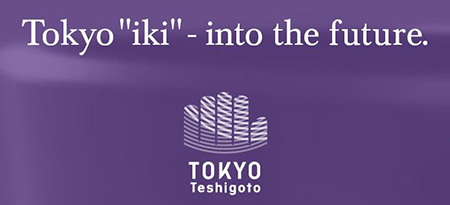Edo Oshi-e Hagoita
(Padded Collage Paddles)

- In praying for the sound health of girls, luxurious things were invented.
- Hanetsuki (battledore), a traditional play for New Year, is played with a prayer to safeguard the sound health of people. After the 17th century, a tradition began of presenting Hagoita paddles to girls on their birthdays and the Oshi-e (padded collage) technique developed for making three-dimensional designs with decorations using cotton-padded cloth. Among the general population, Hagoita reproducing scenes from Kabuki plays became popular and beauty was sought in decoration of Hagoita. The inherited traditions use motifs of women in Furisode (longsleeved kimono) and Kabuki actors based on Nichibu (traditional Japanese dance), Japanese paintings, and Kabuki. It is difficult to reproduce scenes from Nichibu and Kabuki and to express their dynamics. Design craftsmen work on their plans after seeing the real dramas being staged. Craftsmen utilize the maximum area of the near-trapezoidal board to express dynamics and create a cubic effect with specific concentration on the look of a human figure’s face. They reflect changing fashions on the dolls’ faces and seek to create beautiful and vivid expressions. Product lines include Hagoiata for wall decorations and desk utilities in various sizes to suit different display locations, and they are very popular as lucky charms for girls’ cerebration of a birth for New Year, and as collectors’ items for Kabuki fans.
| Main Areas of Manufacture | Sumida Ward, Koto Ward, Katsushika Ward |
|---|---|
| Designation/ Certification Date | July 15th, 1985 (Tokyo Certification) |
| Traditionally Used Raw Materials | Paulownia wood is used for the Hagoita paddles. Silk and cotton textiles are used to make Oshi-e. Cotton wadding is used to fill out the pictures. Silk thread is used for hair. |
Traditional Technologies and Techniques
- Creating the Oshi-e (padded collages) that feature in Edo Oshi-e Hagoita (padded collage paddles) involves stuffing cotton wadding between a stencil outline and a fabric base. The finished Oshi-e is then affixed to a Hagoita (a paddle) with paste using a spatula.
- The faces of characters featured on Edo Oshi-e Hagoita are created after a surface has been smoothed by the application of successive layers of gofun (crushed seashell powder). A fine-tipped brush is used to create the face's eyes, its mouth, and the nose.
- Oshi-e collages are comprised of a number of smaller elements. The constructing of a finished Oshi-e involves applying Japanese paper to the back of each element as it is completed. This process involves the use of a spatula and paste.
History and Characteristics
Each year, when people start to feel the onset of the year's end, as part of a long-standing tradition, there is a market selling Hagoita including Edo Oshi-e Hagoita (padded collage paddles) which occurs from December 17th to 19th. This event takes place in the grounds of Asakusa Temple in Taito Ward, Tokyo. Within each of the participating stalls, there are an amazing number of colorful Hagoita displayed which look out on interested visitors. It is a well-known event that both strikes up business as well as welcomes the end of the current year.
Hagoita were originally used to play a form of Japanese battledore (a forerunner of badminton). In ancient times, "Hagoita" were referred to by the names "Kogiita" and "Hanekoita," while shuttlecocks were known by names such as "Koginoko," "Hagonoko" and "Tsukubane."
On the 5th day of the first month in the fourth year of the Eikyo Era (1429-1441), it is recorded that members of the imperial family, the aristocracy and their attendants all gathered at an imperial palace. And they engaged in a game using Hagoita paddles being divided into teams of men and women.
At the time, Hagoita were decorated in a number of ways. One decorative style was called "Kaki-e Hagoita," which involved pictures being drawn directly on the surface of a paddle. There was also a style called "Hari-e Hagoita," where paper and cloth was affixed to paddles. Additionally, there were extravagant and flashy "Sagicho Hagoita" colored with "gofun," and some examples went so far as to be inlayed with gold and silver leaf, or decorated with maki-e (gold or silver lacquer).
On entering the Edo Period (1603-1868), decorations began to be made in which material was stuck to thick cardboard backings, or cotton wadding was used to add thickness. It was through such methods that the Oshi-e techniques developed, and these techniques resulted in it being possible to create collages with a three-dimensional visual effect.
During the Bunka and Bunsei Eras (1804-1829), as the culture of the common classes in Edo developed, along with a boom in Kabuki, there was a lot of work published by the numerous woodblock artists who were active at the time.
Against this backcloth, there were advances in the technology used to make Oshi-e and it was possible to make Hagoita on which the likenesses of famous Kabuki actors were featured, this genre being called "Yakusha (actor) Hagoita."
As each year drew to a close, there used to be competitive demand for the role depictions of that year's popular Kabuki stars. In this respect, the sale of Yakusha Hagoita acted as a barometer of actors' popularity in any particular year.
Contact Details
| Manufacturing Area Cooperative Name | Tokyo Hina Doll Manufacturing Association |
|---|---|
| Address | Tosho Center Building 4th Floor, 2-1-9 Yanagibashi, Taito Ward, Tokyo 111-0052 |
| TEL | 03-3861-3950 |






